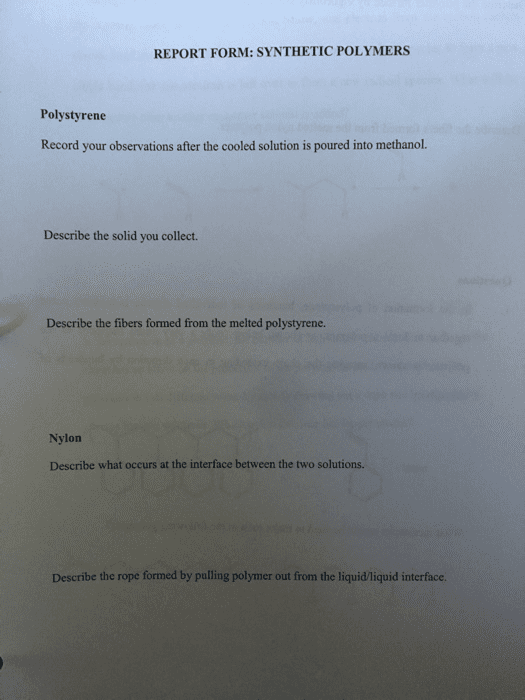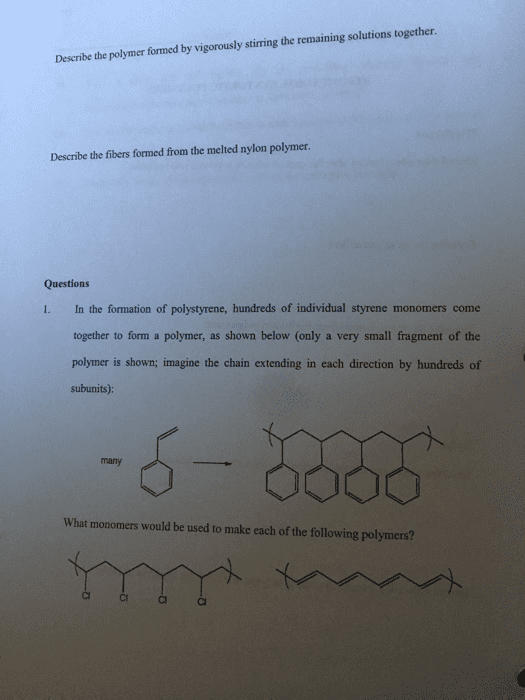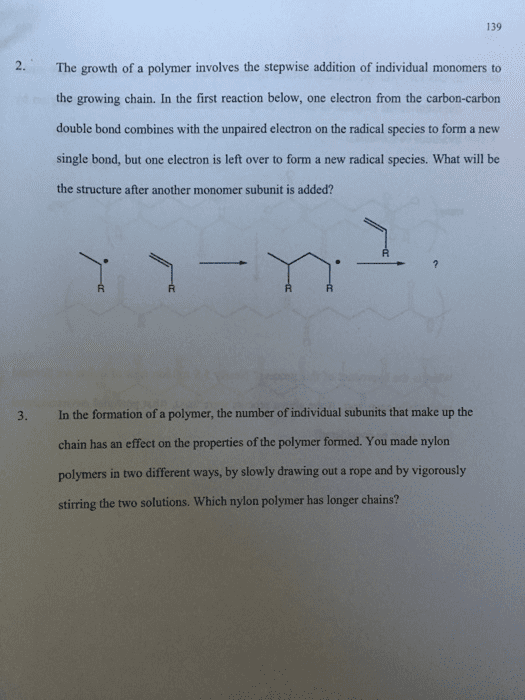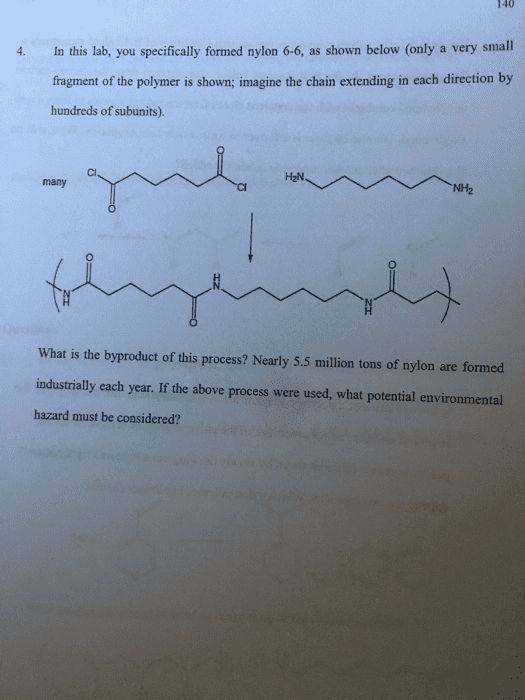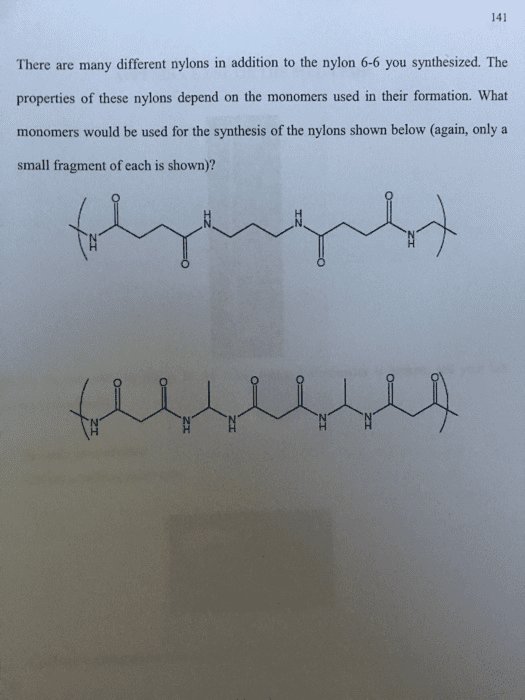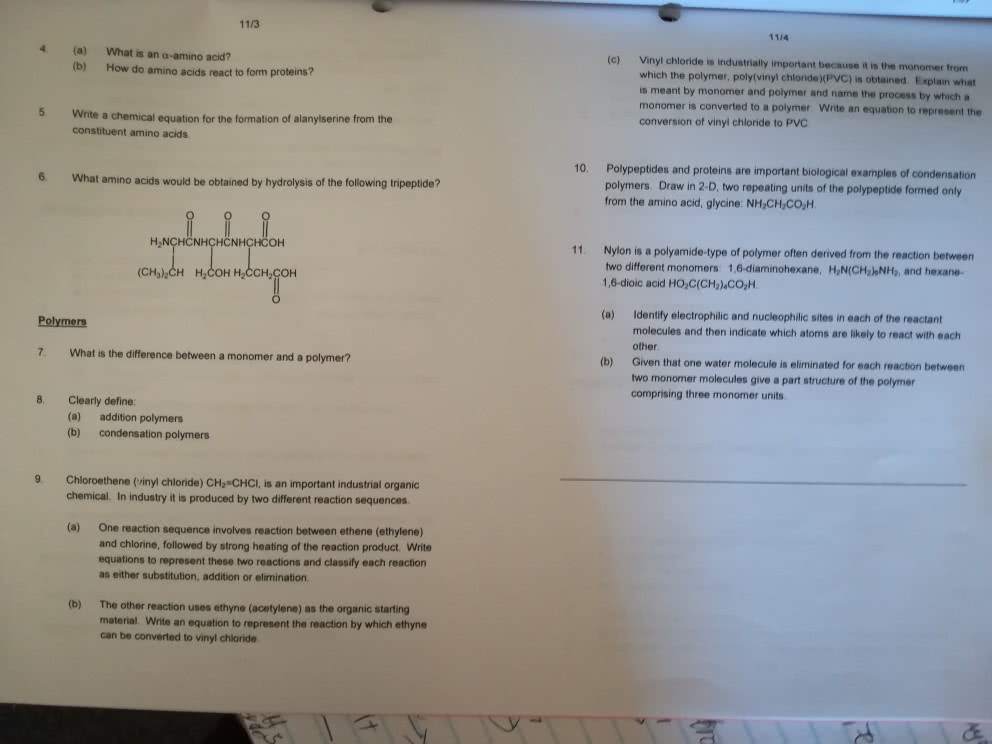CHM 2123 Lecture Notes - Lecture 4: Polystyrene, Bond Energy, Vulcanization
172 views11 pages
2 Nov 2015
School
Department
Course
Professor
Document Summary
The purpose of this experiment was to study the different methods of forming polymers and to understand the reaction of radicals. Polymers are macromolecules that are formed from smaller molecules called monomers, which bind together with a covalent bond. In this experiment, students studied the formation of synthetic polymers, such as polystyrene-maleic anhydride (psma), polyacrylamide (pam), nylon 6,6, and. These types of polymers are meant to improve the comforts of life, whereas natural polymers are meant for the basics of life. Synthetic polymers can be further classified by the method by which they are formed; chain-growth or step-growth. Chain-growth polymers are often also called addition polymers, which react by chain reaction, forming a growth of a polymer. In order for this type of reaction to proceed, first an initiator must be used to form a radical. For the purpose of this experiment, benzoyl peroxide was used as the initiator.




